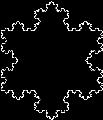
DMT-Nexus member
Posts: 180 Joined: 16-Aug-2015 Last visit: 16-Nov-2025
|
Greetings Nexians, So after researching and experimenting with acacia extractions regularly for the last two years, I have decided to add yet another to the mix as people have been asking me for advice and tips. The method I have written out was intended to be an ‘as simple as possible’ A/B and which is probably in essence a synthesis of The DMT Handbook and Elspice’s tek as these were what I started with. I welcome and feedback, comment or tips on improvement and post this only in the interests of helping others new to the process navigate the basics. Thanks for reading and feel free to share around  Arohanui - Flux
|
|
|
|
|

DMT-Nexus member
Posts: 26 Joined: 23-Sep-2017 Last visit: 06-Dec-2020
|
I've got some acacia coming, and will give this one a shot. One question though, why no addition of salt. Just curious " Loose your inhibition, follow your own ambition" - Dylan
|
|
|

DMT-Nexus member
Posts: 180 Joined: 16-Aug-2015 Last visit: 16-Nov-2025
|
Cool - let me know how you go
Having experimented with the addition of salt, found it results in no significant increase in yield
|
|
|

DMT-Nexus member
Posts: 180 Joined: 16-Aug-2015 Last visit: 16-Nov-2025
|
However, it seems that the addition of salt reduces the amount of pulls needed, allowing most of the goods to be captured in the first 3 pulls
|
|
|

Boundary condition

Posts: 8617 Joined: 30-Aug-2008 Last visit: 29-Nov-2025 Location: square root of minus one
|
JefFlux wrote:However, it seems that the addition of salt reduces the amount of pulls needed, allowing most of the goods to be captured in the first 3 pulls Well, that clearly counts as an increase in efficiency! “There is a way of manipulating matter and energy so as to produce what modern scientists call 'a field of force'. The field acts on the observer and puts him in a privileged position vis-à-vis the universe. From this position he has access to the realities which are ordinarily hidden from us by time and space, matter and energy. This is what we call the Great Work." ― Jacques Bergier, quoting Fulcanelli
|
|
|

DMT-Nexus member
Posts: 180 Joined: 16-Aug-2015 Last visit: 16-Nov-2025
|
Amendment to that however...this is certainly the case with phyllodes and many freeze/thaws... yet a recent experiment with bark and only one freeze thaw (and the addition of salt) pulled just under .75g with each pull and took 5-6 pulls to collect the 3.5 grams usually yielded from 350 grams of material.
Not sure which variable is at play here, bark (crystals were very fine and bright white- whereas they are usually quite spiky globes) or amount of freeze thaw. I have noticed though that excessive freeze/ thaws seems to increase the likely hood of emulsions.
As I understand the rate of cooling/evap plays a large role in crystal formation and the solvent evaporated very quickly in this last lot with the bark, hence very fine dot-like crystals (almost like fluffy salt)
|
|
|

DMT-Nexus member
Posts: 180 Joined: 16-Aug-2015 Last visit: 16-Nov-2025
|
As it seems people who don't have full access to the Nexus forum cannot view the pdf; here is an updated version of The Invocacia Method which was designed for use with the twigs/phyllodes of Australian Acacias in order that people may further understand that taking bark of living acacias is not only entirely unnecessary but needlessly destructive:
I would also recommend that people read page 3 of Cyb’s Max Ion tek as this explains the exact reasons each step is taken - even though the process may differs somewhat, it’s important to understand how salts-bases, freebases, PH levels, ionic bonding, etc work and will give you a better appreciation for the overall process.
The Invocacia Method by Flux
* 200g dried Acacia phyllodes and/or small twigs are shredded to powder in a grinder and frozen overnight - thaw/freeze/thaw up to 3 times to ensure adequate lysing of cells.
* Thawed powder is bought to a gentle simmer/low bubbling boil for 1 hr and 30 minutes in 1.5 litres of acidic water @ pH 3.5 (by dissolving 1 teaspoon of 100 percent ascorbic or citric acid powder into A litre of spring water) -more may be needed however, to counter the alkalinity of tannins in the plant matter.
* After the 1st boil, collect the liquid by straining contents of pot though fine fabric like muslin or cheesecloth (or even an old t-shirt) into a second pot removing as much plant matter as possible and leaving it in the first pot.
* Repeat this simmering process 3-4 times, filtering the liquid each time and collecting this in the second pot until the second pot has the filtered results of all 3-4 boils. The plant matter can be discarded at this point.
* In this second pot, reduce down the results of these 3-4 collected boils until the resulting overall liquid volume (initially approx. 4.5-6 litres) is reduced down to about 1.5 litres.
* This resulting acacia tea is left to sit for 20 minutes to cool and then placed in a thick glass jar (2 to 2.5 litres is adequate) with tight sealable lid...taller is better. Leaving the acidic acacia tea for several hours or overnight however, will allow for fine particle sediment to drop to the bottom which can be filtered out when transferring vessel: this will reduce the potential for emulsions to form later).
* This is the stage where some may wish to add NaCl (Non-iodised Table Salt) to potentially reduce emulsions later. Dissolve 30-40g of Non-iodised table salt to 100ml of hot water and dissolve completely (some boiling maybe required to achieve this). When this solution has cooled, add it to the reduced acidic acacia tea.
* In a Pyrex measuring cup, take 100gm of Caustic Soda/Lye (98 % or higher Sodium Hydroxide) and slowly add this TO 200ml of spring water (one teaspoon at a time) stirring until fully dissolved (NEVER add water to Caustic). Do NOT breath the fumes or DO wear a protective mask. When fully dissolved, measure the pH with a digital pH meter (or pH strips) and it should read a pH of roughly 12.5 or higher. Pour this alkaline solution into the acacia tea in the thick glass jar, stirring with a wooden spoon or stick. The acacia tea will turn from brownish red to grey and then to black quite quickly (it can take a little more time with phyllodes of more fatty acacias). It is also a good idea to let the caustic solution cool completely before adding to acacia tea (this can take at least an hour or two).
* Once acacia tea is basified (made alkaline), check the overall pH of the tea as it may now be lower than 12.5 due to initial acidity of the acacia tea. If this is the case simply dissolve another 30g or so of Caustic Soda in 50ml of spring water and add until pH reaches 12.5. Wearing protective eyewear and gloves is a advised here as Caustic Soda is dangerous on the skin. It can be a good idea to now let the basified tea sit until completely cool.
* Measure 100-150ml (roughly 105 of overall volume) of Shellite in a Pyrex cup (NOT plastic) and add this to the now basified acacia tea and agitate the mix very gently for 5 minutes. Agitation can be done by closing the lid of the jar (using a black garbage bag liner under the lid as an extra seal) and turning the jar slowly end to end (in a rolling manner similar to bicycle pedals). BUT: initially, be sure to release pressure after every turn until no more pressure sounds (fizzing) are heard. For the first pull the solvent can also be stirred into the basified tea to avoid this pressure build up – and to ensure solvent and base solution do not emulsify together.
* After stirring or gently rocking basified tea and Shellite for 1-2 minutes, let the layers (Shellite and basified tea) separate fully and sit for 10-15 minutes. Repeat this process 4-5 times and after the last agitation, let the mix sit for a good 60 minutes before proceeding to next stage.
* Now the Shellite solvent layer will be sitting clearly on top of the basified phyllode tea and can be removed or ‘pulled’ using a glass turkey baster. The Shellite only results are then squirted gently onto a plate (TAKE GREAT CARE to only remove the clear solvent layer and to not get any black basified tea in the collection). If you notice any basified tea getting into the baster as you are drawing it up, simply pour into a shot glass allowing the solvent layer to re-separate leaving any residues of base you may have accidentally caught on the bottom. Let these small volumes settle and removing just the Shellite again from the shot glass with an eye-dropper.
* Once first pull of 150ml Shellite is collected on the plate leave, this to evaporate overnight in low light, dry area (fanning the plate can be used to speed this up). The last few millimetres of Shellite are hard to pull out so don’t worry about capturing this until the very last pull. When the Shellite is collected on the plate, you might observe that when you blow on it gently (or when the fan starts); milky white clouds will appear where air hits the DMT saturated Shellite - this is DMT being revealed in the solvent!
* After all the Shellite has evaporated off the plate and cannot be smelt (a clear DMT smell is likely present instead), using a flexible razor blade, scrape the remaining layer up and leave to dry further. Final results on the plate will yield either crystals, a sand-like product or a resinous honey like wax – or variation thereof.
* After collecting on the plate, add a new lot of 150ml Shellite to the basified acacia tea again and repeat the agitation/separation process. This can sometimes mean doing 5-6 phases of agitation and Shellite collection -until the no more results are can be scraped up from the plate after the Shellite is evaporated.
Colour and consistency of final results may vary. Colour can be white to yellow to orange with some debate about the significance of this. Oily yields can indicate plant oils carried over from the tea as this is the nature of some acacias and the oils can often contain NMT (adding an extra dimension to the effects). Oil and crystals can both be re-dissolved in alcohol and then mixed with equal amount of MAOI herbs to produce Changa (see elsewhere on the Nexus for resources on how to make Changa) and/or simply mixed with benign herbs such as mint, mullein, etc for ‘enhanced leaf’ to make oily results more manageable and smokeable as well as making for a smoother DMT smoke.
Safe & Scintillating travels - Flux
|
|
|

DMT-Nexus member
Posts: 4 Joined: 27-Aug-2017 Last visit: 20-Dec-2024 Location: Everywhere
|
|
|
|

DMT-Nexus member
Posts: 333 Joined: 07-Nov-2009 Last visit: 06-Oct-2022
|
Hey JefFlux, I love how simple this tek sounds and want to give it a shot at some point (hopefully soon). Everything sounds super straight forward and easy, and I've got a couple of garbage bags filled with Acacia phyllodes (they're bone dry and were gathered from the ground) ready to go. I am pretty certain they are Acacia melanoxylon phyllodes -which is not known to be a high yielding Acacia- but I'm keen to experiment and report back. Where I live, there are lots of other varieties of Acacia... but there doesn't seem to be any with a reliably decent DMT content. So my plan is to do numerous experiments with Acacia in my part of the world and try and find something decent. So my question to you before I begin is: is there any updates or bonus information I might need to know before I begin The Invocacia Method tek (given that this was originally posted a few years ago now)? Any help would be appreciated  I am a piece of knowledge-retaining computer code imitating an imaginary organic being.
|
|
|

DMT-Nexus member
Posts: 2229 Joined: 22-Jul-2011 Last visit: 02-May-2024 Location: in the underbelly of the cosmic womb
|
I don't think Shellite is a good solvent to recommend.. it also seems to not work as well as it used to.. even with clean species. It also isn't capable of pulling a lot of the other alkaloids which make acacias so interesting.. Xylene, toluene or DCM are much more effective at pulling alkaloids..
|
|
|

DMT-Nexus member
Posts: 333 Joined: 07-Nov-2009 Last visit: 06-Oct-2022
|
So in theory if I could simply use Xylene, toulene, or DCM without really any other changes? I am a piece of knowledge-retaining computer code imitating an imaginary organic being.
|
|
|

DMT-Nexus member
Posts: 2229 Joined: 22-Jul-2011 Last visit: 02-May-2024 Location: in the underbelly of the cosmic womb
|
Lichen wrote:So in theory if I could simply use Xylene, toulene, or DCM without really any other changes? The changes are m that you'll pull a full spectrum extract as opposed to mostly just dmt/nmt with Shellite.. ime the common brand of Shellite most people in Aus use doesn't work very well so even for pulling a more crystalised extract it has become quite undesireable.
|
|
|

DMT-Nexus member

Posts: 267 Joined: 14-Dec-2018 Last visit: 14-Apr-2024
|
You cannot freeze-precipitate DMT from aromatic hydrocarbons like xylene or toluene. You'll have to use FASA or patiently evaporate them. I do not recommend evaporating xylene indoors  Instead of DCM (which is a suspected carcinogen) you can try extracting with acetone. With acetone I would recommend filtering all the bark material out first. For a separate acetone layer to form, the pH of the aqueous layer must be high enough (12-13). You can freeze-precipitate from acetone, it evaporates fast, and its vapors have low toxicity. Another low-toxic, fast-evaporating, precipitation-friendly option is heptane. It is very similar to naphtha, but it smells less and evaporates faster. You need more of it, and the water must be hot (~70°C).
|
|
|

DMT-Nexus member
Posts: 333 Joined: 07-Nov-2009 Last visit: 06-Oct-2022
|
acacian wrote:Lichen wrote:So in theory if I could simply use Xylene, toulene, or DCM without really any other changes? The changes are m that you'll pull a full spectrum extract as opposed to mostly just dmt/nmt with Shellite.. ime the common brand of Shellite most people in Aus use doesn't work very well so even for pulling a more crystalised extract it has become quite undesireable. Awesome, thanks for the confirmation. Hailstorm wrote:You cannot freeze-precipitate DMT from aromatic hydrocarbons like xylene or toluene. You'll have to use FASA or patiently evaporate them. I do not recommend evaporating xylene indoors  Instead of DCM (which is a suspected carcinogen) you can try extracting with acetone. With acetone I would recommend filtering all the bark material out first. For a separate acetone layer to form, the pH of the aqueous layer must be high enough (12-13). You can freeze-precipitate from acetone, it evaporates fast, and its vapors have low toxicity. Another low-toxic, fast-evaporating, precipitation-friendly option is heptane. It is very similar to naphtha, but it smells less and evaporates faster. You need more of it, and the water must be hot (~70°C). That's excellent advice, thanks very much. I'll get some acetone, and report back when I've (eventually) extracted. I am a piece of knowledge-retaining computer code imitating an imaginary organic being.
|
|
|

DMT-Nexus member
Posts: 180 Joined: 16-Aug-2015 Last visit: 16-Nov-2025
|
Quote:it also seems to not work as well as it used to that's for damn sure. It has been observed recently that 4litre bottles from one outlet are noticeably different from 1 litre bottles from another- yet both are the common (only) brand of Shellite sold here. The former (from larger hardware chain) has a distinct Kerosine/mineral turps like smell and pulls a very runny result even for acacia oil - whereas the latter (smaller chain) has the old Shellite smell and will pull crystal or a more putty like yield in far better quantities...but its still not what it once was. Given that Shellite is a hybrid of Napthines and Parafinest and other petrochems, my reasoning for this is that they are different batches. One major amendment to the original tek above is the amount of NaOh - it would now be recommended to use 100g at least (or base until black). Acacia tea seems to take a while to darken and can often stay brown even with double this amount of Caustic - it can be seen to form distinct brown and black layers when settled.
|
|
|

DMT-Nexus member
Posts: 180 Joined: 16-Aug-2015 Last visit: 16-Nov-2025
|
It used to be estimated here, that 30ml of Shellite could hold 1g of DMT. It seems more like 100ml these days but definitely yields solid white crystal from the odd 'clean' acacia species and from Mimosa *recent tests on MHRB have been yielding 2.5-3% every time- obviously with good quality bark but with the stock standard Shellite that we all 'dig'  .
|
|
|

DMT-Nexus member
Posts: 180 Joined: 16-Aug-2015 Last visit: 16-Nov-2025
|
Lichen wrote:Hey JefFlux, I love how simple this tek sounds and want to give it a shot at some point (hopefully soon). Everything sounds super straight forward and easy, and I've got a couple of garbage bags filled with Acacia phyllodes (they're bone dry and were gathered from the ground) ready to go. I am pretty certain they are Acacia melanoxylon phyllodes -which is not known to be a high yielding Acacia- but I'm keen to experiment and report back. Where I live, there are lots of other varieties of Acacia... but there doesn't seem to be any with a reliably decent DMT content. So my plan is to do numerous experiments with Acacia in my part of the world and try and find something decent. So my question to you before I begin is: is there any updates or bonus information I might need to know before I begin The Invocacia Method tek (given that this was originally posted a few years ago now)? Any help would be appreciated  Hi Lichen, glad you like the simplicity - that was indeed my aim. Rather than making amendments in thread each time, I have been over the original post (not the pdf file yet though) and added a few minor changes, such as letting hot solutions cool before adding together to reduce potential emission, as well as indicating the stage where one might wish to add salt to reduce emulsions later. Melanoxylon is pretty void of desireable alkaloids, but I'm keen to hear how your other experiments have gone. cheers, Flux
|
|
|

DMT-Nexus member
Posts: 180 Joined: 16-Aug-2015 Last visit: 16-Nov-2025
|
Just a note on using citric acid. It’s come to my understanding that “ As the water evaporates, the concentration of citric acid in the lemon juice would increase. As the pH of a solution is dependent upon the concentration of the acid in solution, this would have the effect of lowering the pH.”(1) This would explain why more base is needed to reach desired pH or even black solution. This can also result in the increased weakening of glass vessels, so I would advise switching back to Ascorbic Acid which required a little more and is a bit pricier and harder to get but maybe worth it. (1). http://www.madsci.org/posts/arc...f%20lowering%20the%20pH.
|
|
|

DMT-Nexus member
Posts: 2229 Joined: 22-Jul-2011 Last visit: 02-May-2024 Location: in the underbelly of the cosmic womb
|
Do you find that using shellite now that more often than not small droplets of a watery substance precipitate out and at the end they will sit there as water blobs in the final extract? Even using a clean tree like narrow phyllode acuminata has behaved this way.. makes me not want to use shellite anymore .. I wish I could pinpoint the problem! Unfortunately around here there is no good toluene which is my preferred solvent. Back to xylene I guess
|
|
|

DMT-Nexus member
Posts: 2229 Joined: 22-Jul-2011 Last visit: 02-May-2024 Location: in the underbelly of the cosmic womb
|
JefFlux wrote:Quote:it also seems to not work as well as it used to One major amendment to the original tek above is the amount of NaOh - it would now be recommended to use 100g at least (or base until black). Acacia tea seems to take a while to darken and can often stay brown even with double this amount of Caustic - it can be seen to form distinct brown and black layers when settled. I have noticed this too.. some species (floribunda a good example stays a yellowy brown for me a lot of the time) .. do you think it is an issue?
|